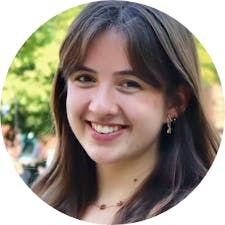On Tuesday, Provost Francis Doyle announced that Greg Hirth ScM’87 PhD’91, a professor of earth, environmental and planetary sciences, will be Brown’s next vice president for research.
His appointment comes as the new Trump administration has threatened an expansive freeze on federal funding, jeopardizing millions of dollars in federal research grants, including some that Brown researchers depend on.
Hirth has been serving in this position in an interim role since September 2024. He succeeds Jill Pipher, whose term ended in June.
There is “a lot of uncertainty” in the academic research landscape due to the “transition that’s occurring in Washington, D.C.,” Hirth said in an interview with The Herald. He stressed that communication between the research office, the provost’s office, the president and the deans of the different schools at Brown is essential.
“We’re following things closely,” Hirth said. “There are a broad range of contingencies that we have to consider, and that’s part of the job.”
On Jan. 28, President Christina Paxson P’19 P’MD’20 and Doyle announced the formation of a group of University administrators who are working to “closely assess the orders coming out of Washington, D.C.”
“We always follow the law,” they wrote in a letter to the Brown community. “But we are also prepared to exercise our legal right to advocate against laws, regulations or other actions that compromise Brown's mission.”
In the letter announcing Hirth’s promotion, Doyle described the geologist as “instrumental in helping Brown researchers navigate grant submission guidelines and new directives from federal agencies in the wake of the new presidential administration.”
Hirth also steps into this role during the University’s ongoing shift toward a research institution and away from its liberal arts college roots. For Hirth, the key to achieving this is strengthening “the conduit between the senior administration and the faculty” to “leverage the opportunities we have to the fullest extent.”
“At Brown, the talent is spectacular,” Hirth said. “There is a lot of push, and there has been for a long time, to increase the success and impact of research at Brown.”
“I see just a huge potential to push it further,” he added.
This reflects what Hirth describes as the “aspirational” half of the position’s two major responsibilities. The other responsibility is the “operational” side, or maintaining the “strict rules” for grant processes.
In his letter, Doyle mentioned that during Hirth’s interim role, the Division of Research received “a record number of submissions” to Brown’s SEED and Salomon research grant programs — funding for research in the humanities and social sciences.
“I look forward to continuing to work closely with Greg and to collaborating with him and the entire Division of Research staff to support Brown’s ambitious research goals,” Doyle wrote.
Hirth has enjoyed a successful career in research. Last April, he was elected to join the prestigious American Academy of Arts and Sciences.
After finishing his PhD at Brown in 1991, Hirth spent 14 years researching at the Woods Hole Oceanographic Institution in Massachusetts, doing “boots-on-the-ground” geology. Hirth’s research background is in geology and geophysics, studying topics from rock deformation to earthquakes to mountain-building.
Hirth returned to College Hill in 2007 to pursue teaching alongside his research. He plans to use the perspective gained from nearly two decades of University research experience to inform his work as vice president for research.
“Part of science is the science,” Hirth said. “But the other part of science is the ability to communicate, think of ways to remove barriers to progress and really support people who are taking off.”
“Those types of things don’t get stuck within a discipline,” he added. “They’re really applicable to everything.”

Elise Haulund is a science & research editor and sophomore from Redondo Beach, CA. Concentrating in English and biology, she has a passion for exploring the intersection between STEM and the humanities. Outside of writing, researching and editing, she enjoys ballet-dancing, cafe-hopping and bullet-journaling.





